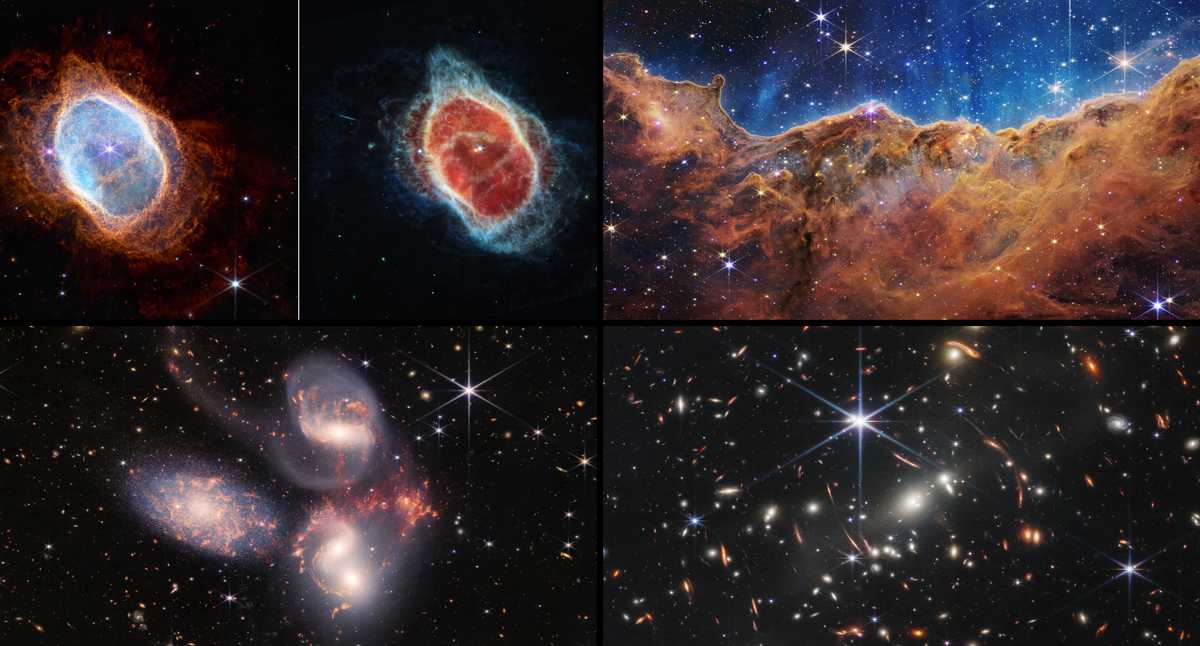Impressive images of the first galaxies formed since the Big Bang, sent by the James Webb Space Telescope, reveal God’s “extraordinary power” and “his love for beauty,” the director of the Vatican Astronomical Observatory has commented.
“We are very excited about the new images coming from the Webb Telescope! They are beautiful pictures (…). It’s an exciting glimpse into what we might learn about the universe in the future,” said Guy Consolmagno, the lab’s director, in a statement.
“The science that developed the telescope was an attempt to use the intelligence that God gave us Understand the logic of the universe. Because the universe wouldn’t work if it wasn’t logical.” But the universe, he noted, “is not only logical, but also beautiful.”
“It is the work of God revealed to usAnd in it we can see both its extraordinary power and love of beauty”, Guy Consolmagno underlined after discovering the first sign of steam in the atmosphere of an exoplanet.
“150 years ago, Father Angelo Cecchi added a prism to the lens of his telescope on the roof of the Church of San Ignacio in Rome and made the first spectroscopic measurements of the atmospheres of the planets of our own solar system,” he recalled.
:quality(50)//cloudfront-us-east-1.images.arcpublishing.com/semana/UVA7KDZZRNB7LGDMQCM3TQMM64.JPG)
to the church The origin of the universe is still divineIts scientific theory has evolved significantly over the past century.
In 1992 Pope John Paul II definitively rehabilitated Galileo Galilei, who had been condemned by the Inquisition in 1633 for supporting the thesis of the Polish scientist Nicolaus Copernicus (1473–1543) that the Earth revolved around itself and the Sun.
:quality(50)//cloudfront-us-east-1.images.arcpublishing.com/semana/EAW3OBWZAFBELF7AOBHQMTNEVE.JPG)
Images from the James Webb Telescope: A window into the universe’s past
During a public event hosted by the White House of the United States, President Joe Biden, along with NASA Director Bill Nelson, revealed to the world what astronomers determined to be the deepest glimpse into Earth’s past.
“It is the oldest documented light in the history of the universe 13 billion onwards. Let me repeat: 13 billion years ago,” President Biden said. For his part, Bill Nelson assured, “This image encompasses the size of a grain of sand that holds a portion of the sky at arm’s length. It is only a small part of the vast universe.”
:quality(50)//cloudfront-us-east-1.images.arcpublishing.com/semana/RE476JB4RVBR3CMMD2WL2BVKZY.JPG)
“We can see possibilities that no one has seen before,” Biden said. “We can go where no one has gone before”. James Webb is the telescope that captured the image and contains information about the galaxy cluster SMACS 072, the Pegasus galaxy, the Carina Nebula, the Southern Ring Nebula, the exoplanet WASP-96b (980 light-years away), and Plus.
Webb was launched aboard an Ariane 5 rocket from French Guiana in December 2021. After traveling 1.6 million kilometers from Earth, it orbits the Sun at the second Lagrange Point in space. The total cost of the project is estimated at 10,000 million dollars. NASA predicts that this web can live for 20 years.
Thanks to the telescope, “we saw what happens when a planet and its atmosphere pass in front of the star, and the light from the star is filtered through the atmosphere, and the light can be broken down into wavelengths by NASA’s Nicole. Golan said.
The innovations didn’t stop there. Webb photographed the Carina Nebula, one of the largest and brightest nebulae in the sky. It is located about 7,600 light-years away in the southern constellation of Carinae. Nebulae are star nurseries where stars form. The Carina Nebula contains massive stars many times the size of the Sun, according to AP data.
Another quality of James Webb, according to the Associated Press, is niris, a slitless spectrograph that splits light into its different wavelengths. It has several methods, two of which are specifically designed to study exoplanets close to their parent stars, the AP reports.
*With information from AFP.





:quality(85)/cloudfront-us-east-1.images.arcpublishing.com/infobae/KTKFKR763RBZ5BDQZJ36S5QUHM.jpg)